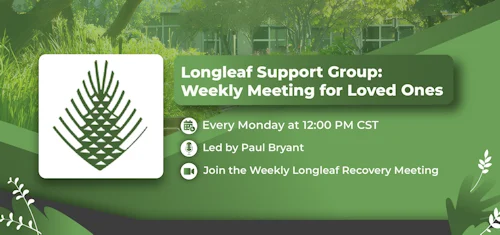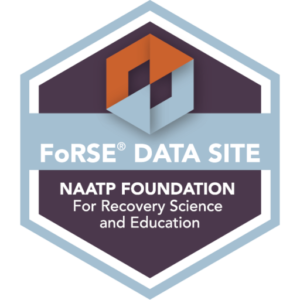Maybe you’ve been struggling with flashbacks that won’t go away. Perhaps nightmares keep you awake at night, or you find yourself avoiding places that remind you of a traumatic event. Or possibly you’re concerned about a loved one who seems like a different person since their trauma. Whatever brought you here, you’re looking for answers about PTSD treatment centers and what specialized care can offer.
Finding accurate, trustworthy information is the first step for anyone searching for a PTSD treatment center. At Longleaf Recovery & Wellness, we understand the complexity of post-traumatic stress disorder and are committed to providing evidence-based, compassionate care to help individuals reclaim their lives.
The condition is more common than many people realize. The U.S. Department of Veterans Affairs reports that about 3.5% of U.S. adults experience PTSD each year, with women being twice as likely as men to develop the condition.
PTSD symptoms fall into four main categories:
- Intrusive memories: Unwanted, distressing memories of the trauma that seem to pop up without warning
- Avoidance: Going out of your way to avoid people, places, activities, or thoughts that remind you of the trauma
- Negative changes in thinking and mood: Feeling detached from others, losing interest in activities you once enjoyed, or having persistent negative thoughts about yourself or the world
- Changes in physical and emotional reactions: Being easily startled, feeling constantly on guard, having trouble sleeping, or experiencing angry outbursts
Traumatic events that can lead to PTSD include military combat, sexual assault, serious accidents, natural disasters, childhood abuse, or witnessing violence. Not everyone who experiences trauma develops PTSD, but for those who do, professional treatment at specialized post-traumatic stress disorder treatment facilities can make a significant difference.
When to Consider Inpatient PTSD Treatment
You might consider inpatient care for PTSD if you’re experiencing:
- Severe symptoms that disrupt daily functioning: Unable to work, maintain relationships, or care for yourself
- Safety concerns: Having thoughts of suicide or self-harm, or feeling unsafe in your current environment
- Complex trauma: Multiple traumatic experiences or trauma that occurred during childhood
- Treatment-resistant symptoms: Outpatient therapy hasn’t provided adequate relief after several attempts
Recent data from the Substance Abuse and Mental Health Services Administration shows that approximately 13 million adults in the United States had PTSD in 2021. Of these, many required intensive treatment to achieve symptom relief and functional improvement.
Inpatient care for PTSD offers several advantages over outpatient treatment. The controlled environment eliminates external stressors that might trigger symptoms. Medical supervision ensures safety during the most challenging phases of treatment. The intensive therapy schedule allows for faster progress than weekly outpatient sessions.
Types of PTSD Treatment Programs
Residential programs provide live-in treatment that typically lasts 30 to 90 days. Unlike inpatient psychiatric care, residential trauma treatment programs focus more on therapeutic community living than medical stabilization.
In residential settings, you live with others who are also working through trauma recovery. Daily schedules include individual therapy, group sessions, educational workshops, and recreational activities. The environment feels more like a therapeutic community than a hospital.
These programs work well for people who need intensive support but don’t require 24/7 medical monitoring. PTSD residential treatment centers often serve as a step-down from inpatient care or as an alternative for those who need more support than outpatient therapy provides.
Partial Hospitalization Programs (PHP) and Intensive Outpatient Programs (IOP) offer structured therapy several hours per day, multiple days per week, while allowing you to return home each evening.
PHP typically involves 6-8 hours of treatment per day, 5-7 days per week. IOP usually requires 3-4 hours of treatment, 3-5 days per week. Both programs include individual therapy, group sessions, and skill-building activities.
These trauma treatment programs serve people stepping down from higher levels of care or those who need more support than standard weekly therapy. They help bridge the gap between intensive treatment and independent living.
Outpatient therapy involves regular appointments with a mental health professional while living at home. Sessions typically occur once or twice per week and can continue for months or years.
This level of care works for people with mild to moderate symptoms who have stable living situations and strong support systems. Many PTSD help centers offer outpatient services as part of ongoing recovery support.

Evidence-Based Therapies Used in PTSD Rehab
Cognitive Processing Therapy (CPT) helps people examine and challenge unhelpful thoughts related to their trauma. The therapy typically involves 12 sessions where you learn to identify “stuck points” – beliefs about the trauma that keep you feeling distressed.
During CPT, you’ll write about your trauma experience and work with your therapist to identify patterns in your thinking. Research published in the Journal of Consulting and Clinical Psychology shows that CPT reduces PTSD symptoms in 40-60% of participants.
EMDR therapy combines recalling traumatic memories with guided eye movements or other forms of bilateral stimulation. This process helps your brain reprocess traumatic memories so they become less distressing.
During EMDR sessions, you’ll focus on a traumatic memory while following your therapist’s finger movements with your eyes. Studies indicate that 77-90% of people with single-trauma PTSD no longer meet diagnostic criteria after 3-6 EMDR sessions.
Prolonged Exposure (PE) therapy gradually helps you face trauma-related memories and situations you’ve been avoiding. The therapy includes talking through your trauma story repeatedly and gradually approaching safe situations you’ve been avoiding.
PE typically involves 8-15 sessions. Research shows that 60-80% of people who complete PE therapy experience significant symptom reduction. This approach works particularly well for people who have developed strong avoidance patterns.

What to Expect in a PTSD Treatment Facility
Most inpatient PTSD treatment centers follow consistent daily schedules that provide stability and predictability. A typical day might include:
- Morning check-ins: Brief meetings with staff to discuss your current state and any concerns
- Individual therapy: One-on-one sessions with your assigned therapist
- Group therapy: Sessions with other people working through similar challenges
- Educational workshops: Learning about trauma, coping skills, and recovery strategies
- Recreational activities: Art therapy, physical exercise, or other healing activities
- Evening reflection: Time to process the day’s experiences and prepare for rest
This structure helps create a sense of safety and routine, which can be particularly healing for people whose trauma disrupted their sense of predictability and control.
Many people with PTSD also experience physical symptoms or other mental health conditions. PTSD treatment facilities typically provide comprehensive medical care alongside psychological treatment.
Medical support may include:
- Medication management: Working with psychiatrists to find medications that help reduce symptoms
- Sleep support: Addressing insomnia and nightmares that commonly accompany PTSD
- Physical health monitoring: Ensuring overall health during the stress of trauma processing
The best trauma treatment centers in the US integrate medical and psychological care to address the whole person, not just PTSD symptoms.
Treating Co-Occurring Conditions
Common co-occurring conditions include:
- Depression: Persistent sadness, hopelessness, and loss of interest in activities
- Anxiety disorders: Excessive worry, panic attacks, or specific phobias
- Substance use disorders: Using alcohol or drugs to cope with PTSD symptoms
- Sleep disorders: Chronic insomnia or sleep disturbances beyond typical PTSD symptoms
Treatment centers for PTSD typically use integrated treatment approaches, addressing all conditions simultaneously rather than treating them separately. This approach recognizes that these conditions often influence each other and that treating them together leads to better outcomes.
How to Choose the Right PTSD Rehab Center
Key considerations include:
- Accreditation and licensing: Look for facilities accredited by organizations like The Joint Commission or CARF
- Staff qualifications: Verify that clinicians have specific training in trauma treatment
- Treatment approaches: Ensure the center offers evidence-based therapies like CPT, EMDR, or PE
- Specialized programs: Some centers offer programs specifically for veterans, first responders, or other groups
- Insurance acceptance: Confirm that your insurance plan covers treatment at the facility
Location also matters. Some people prefer ptsd treatment centers near me for family support and familiar surroundings. Others benefit from treatment farther from home to focus entirely on recovery without local triggers or distractions.
Military ptsd treatment centers may offer specialized understanding of combat trauma and military culture. These programs often include veterans as staff members and incorporate military values into the recovery process.

Frequently Asked Questions About PTSD Treatment Centers
Inpatient PTSD treatment usually lasts 2-6 weeks, though some people may need longer depending on symptom severity and treatment response.
Most private insurance plans cover PTSD treatment, and veterans may use VA benefits for treatment at approved facilities.
Residential care is typically recommended when symptoms severely impact daily functioning, when safety is a concern, or when outpatient treatment hasn’t been effective.
Trauma-focused therapy uses specific techniques designed to help process traumatic memories safely, while regular counseling may not address the unique effects of trauma.
Most residential programs include family therapy sessions and visiting opportunities, though policies vary by facility.
Many PTSD treatment facilities offer dual diagnosis programs that treat both PTSD and substance use disorders simultaneously.
Insurances We Accept









Find Specialized PTSD Treatment in Birmingham
Our Birmingham facility offers both residential and outpatient programs, allowing us to meet people where they are in their recovery journey. We understand that each person’s experience with trauma is unique, and our treatment plans reflect this individuality.
If you’re ready to take the first step toward healing, verify your insurance to begin your recovery journey at Longleaf Recovery & Wellness. Our specialized PTSD treatment center in Birmingham provides comprehensive care tailored to your unique needs. Visit our insurance verification page to learn more about your coverage options.
- National Institute of Mental Health. Post-Traumatic Stress Disorder. https://www.nimh.nih.gov/health/topics/post-traumatic-stress-disorder-ptsd
- S. Department of Veterans Affairs. How Common is PTSD in Adults. https://www.ptsd.va.gov/understand/common/common_adults.asp
- Substance Abuse and Mental Health Services Administration. 2021 National Survey on Drug Use and Health.







